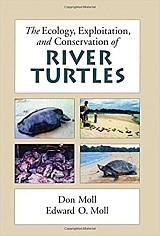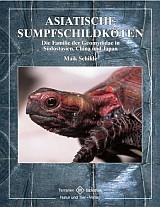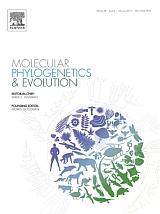




Related bibliographies:
Reptiles
 Turtles Turtles
 Batagur Batagur
 Cuora Cuora
 Cyclemys Cyclemys
 Geoclemys Geoclemys
 Geoemyda Geoemyda
 Hardella Hardella
 Heosemys Heosemys
 Leucocephalon Leucocephalon
 Malayemys Malayemys
 Mauremys Mauremys
 Melanochelys Melanochelys
 Morenia Morenia
 Notochelys Notochelys
 Orlitia Orlitia
 Pangshura Pangshura
 Rhinoclemmys Rhinoclemmys
 Sacalia Sacalia
 Siebenrockiella Siebenrockiella
 Vijayachelys Vijayachelys
Africa
Asia
Central America
Europe
Malay Archipelago
Middle East
North America
South America






































































































































































































































































































































| |

Bibliography of the family
Geoemydidae (Eastern Pond Turtles)

(Reptilia: Testudines)
Note:
In order to limit redundancy, relevant literature indexed in the related bibliographies in the left column may not have been included in this page. For a comprehensive search of literature, these bibliographies should therefore also be consulted.
 |
Anonymous. 2012. [A review on the phylogeny of Geoemydidae in Testudines]. (In Chinese). Chinese Journal of Zoology 47(6): 144-155.
Bi, T.T.; Nie, L.W.; Zhang, Y.Y.; Pu, Y.G.; Jing, W.X. 2011. [Research progress for turtles with hinge structure in Bataguridae from taxonomic and phylogenetic studies]. (In Chinese). Journal of Biology (Hefei) 28(2) (Sum 160): 80-82.
Carr, J.L.; Bickham, J.W. 1986. Phylogenetic implications of karyotypic variation in the Batagurinae (Testudines: Emydidae). Genetica (Dordrecht) 70(2): 89-106.
Fritz, U.; Obst, F.J. 1999. Neue Schildkröten aus Südostasien. 2. Bataguridae (Cyclemys, Heosemys, Mauremys, Ocadia, Pyxidea, Sacalia) und Trionychidae. Sauria (Berlin) 21(1): 11-26.
Garbin, R.C.; Ascarrunz, E.; Joyce, W.G. 2018. Polymorphic characters in the reconstruction of the phylogeny of geoemydid turtles. Zoological Journal of the Linnean Society 184(3): 896-918.
Hirayama, R. 1984. Cladistic analysis of batagurine turtles (Batagurinae: Emydidae: Testudinoidea): a preliminary result. Studia Geologica Salmanticensia Volumen Especial 1: 141-157.
Honda, M.; Yasukawa, Y.; Ota, H. 2002. Phylogeny of the Eurasian freshwater turtles of the genus Mauremys Gray 1869 (Testudines), with special reference to a close affinity of Mauremys japonica with Chinemys reevesii. Journal of Zoological Systematics and Evolutionary Research 40(4): 195-200.
Le, M.; McCord, W.P. 2008. Phylogenetic relationships and biogeographical history of the genus RhinoClemmys Fitzinger, 1835 and the monophyly of the turtle family Geoemydidae (Testudines: Testudinoidea). Zoological Journal of the Linnean Society 153(4): 751-767.
Ludwig, M.; Auer, M.; Fritz, U. 2007. Phalangeal formulae of geoemydid terrapins (Batagur, Callagur, Hardella, Heosemys, Kachuga, Orlitia, Pangshura, RhinoClemmys) reflect distinct modes of life. Amphibia-Reptilia 28(4): 574-576.
Luiselli, L. 2006. Resource partitioning in the communities of terrestrial turtles: a review of the evidences. Revue d'Ecologie la Terre et la Vie 61(4): 353-365.
McCord, W.P. 1997. Mauremys pritchardi, a new batagurid turtle from Myanmar and Yunnan, China. Chelonian Conservation and Biology 2(4): 555-562.
McCord, W.P.; Joseph-Ouni, M. 2003. Chelonian illustrations. 10. Monotypic genera of the family Geoemydidae. Reptilia (GB) 30: 34-38.
McLaughlin, C.J.; Stayton, C.T. 2016. Convergent evolution provides evidence of similar radiations in shell shape in the turtle families Emydidae and Geoemydidae. Herpetologica 72(2): 120-129.
Obst, F.J. 2003. Sumpfschildkröten. Draco 4(1) (13): 4-18.
Parham, J.F.; Shi, H. 2001. The discovery of Mauremys iversoni-like turtles at a turtle farm in Hainan Province, China: the counterfeit golden coin. Asiatic Herpetological Research 9 [2000]: 71-76.
Parham, J.F.; Simison, W.B.; Kozak, K.H.; Feldman, C.R.; Shi, H. 2001. New Chinese turtles: endangered or invalid? A reassessment of two species using mitochondrial DNA, allozyme electrophoresis and known-locality specimens. Animal Conservation 4(4): 357-367.
Praschag, P.; Hundsdörfer, A.K.; Fritz, U. 2007. Phylogeny and taxonomy of endangered south and south-east Asian freshwater turtles elucidated by mtDNA sequence variation (Testudines: Geoemydidae: Batagur, Callagur, Hardella, Kachuga, Pangshura). Zoologica Scripta 36(5): 429-442.
Rust, H.T. 1936. Interessante Schildkröten. II. Wochenschrift für Aquarien- und Terrarienkunde (Braunschweig) 34-35: 1-3.
Sasaki, T.; Yasukawa, Y.; Takahashi, K.; Miura, S.; Shedlock, A.M.; Okada, N. 2006. Extensive morphological convergence and rapid radiation in the evolutionary history of the family Geoemydidae (Old World pond turtles) revealed by SINE insertion analysis. Systematic Biology 55(6): 912-927.
Schilde, M. 2004. Asiatische Sumpfschildkröten: die Familie Geoemydidae in Südostasien, China und Japan. Natur und Tier-Verlag, Münster. 189 pp.
Sites, J.W.; Bickham, J.W.; Pytel, B.A.; Greenbaum, I.F.; Bates, B.A. 1984. Biochemical characters and the reconstruction of turtle phylogenies: relationships among batagurine genera. Systematic Zoology 33(2): 137-158.
Spinks, P.Q.; Shaffer, H.B.; Iverson, J.B.; McCord, W.P. 2004. Phylogenetic hypotheses for the turtle family Geoemydidae. Molecular Phylogenetics and Evolution 32(1): 164-182.
Stuart, B.L.; Parham, J.F. 2007. Recent hybrid origin of three rare Chinese turtles. Conservation Genetics 8(1): 169-175.
Wink, M.; Guicking, D.; Fritz, U. 2001. Molecular evidence for hybrid origin of Mauremys iversoni Pritchard et McCord, 1991, and Mauremys pritchardi McCord, 1997 (Reptilia: Testudines: Bataguridae). Zoologische Abhandlungen (Dresden) 51(1): 41-49.
Yasukawa, Y.; Hirayama, R.; Hikida, T. 2001. Phylogenetic relationships of geoemydine turtles (Reptilia: Bataguridae). Current Herpetology 20(2): 105-133.
Zhou, Z.; Jiang, Z. 2008. Characteristics and risk assessment of international trade in tortoises and freshwater turtles in China. Chelonian Conservation and Biology 7(1): 28-36.
|
| | 


















































































































































































|

